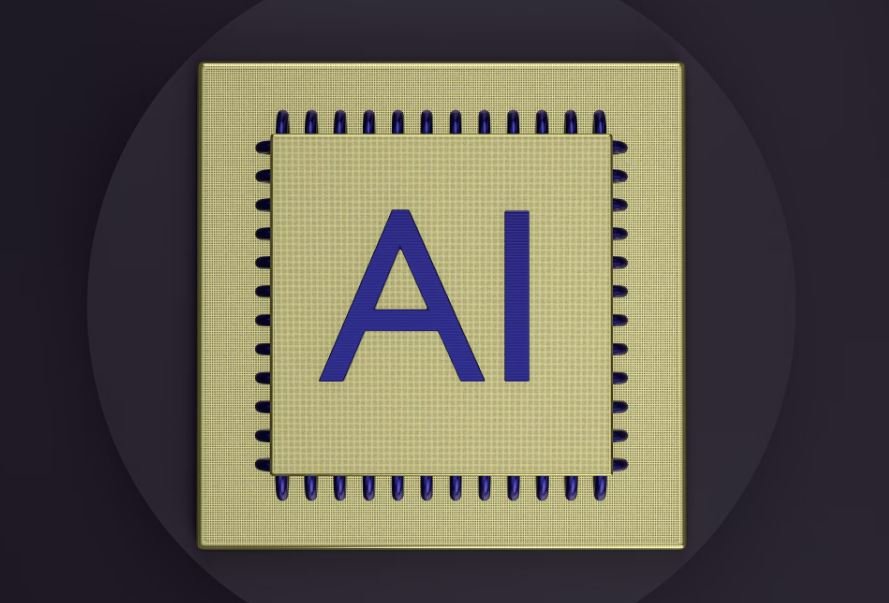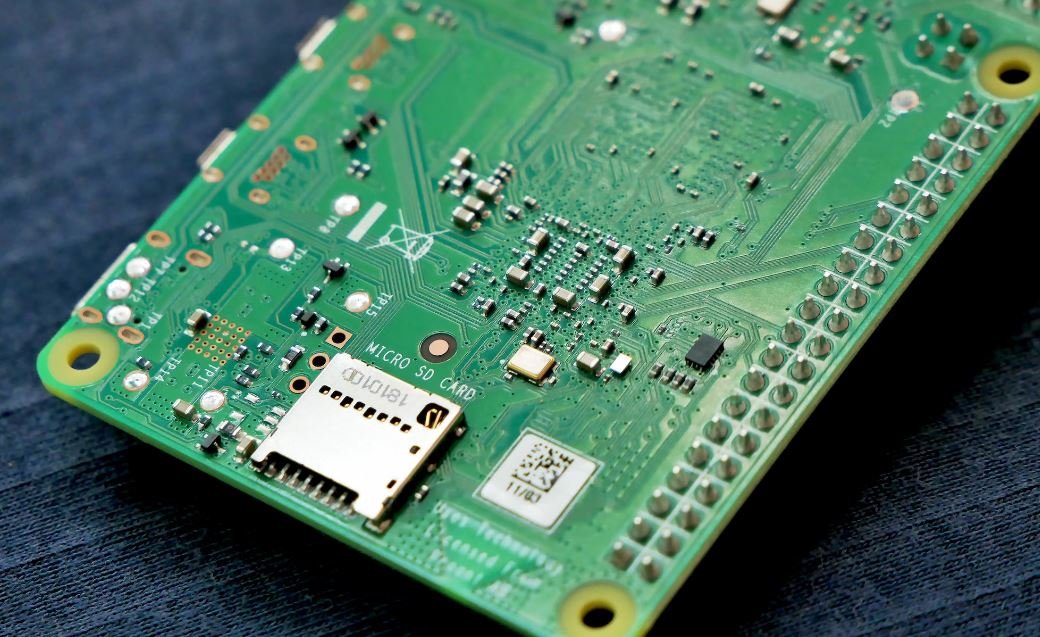Applications of Geometry
Geometry is a branch of mathematics that deals with shapes, sizes, and properties of figures and spaces. It is not only a fundamental subject in math education but also has numerous practical applications in various fields, from architecture and engineering to art and design. Understanding the applications of geometry can help us make sense of the world around us and contribute to advancements in different industries.
Key Takeaways:
- Geometry is not just an abstract math subject; it finds applications in various fields.
- Geometry helps architects and engineers design and construct buildings and structures.
- Artists and designers use geometry in creating aesthetically pleasing compositions and patterns.
- Geometry plays a crucial role in computer graphics and animation.
- Medical professionals utilize geometry in imaging technologies and surgical procedures.
Architects and engineers heavily rely on geometry in their design and construction processes. **Geometry allows them to accurately measure and calculate dimensions, angles, and distances** to ensure the stability and efficiency of buildings and structures. From determining the surface area and volume of a room to creating precise blueprints and 3D models, geometry is an essential tool for professionals in the architectural and engineering fields. *The intricate geometric patterns in Gothic cathedrals showcase the beauty and complexity of geometry applied to architectural design.*
Artists and designers utilize geometry to create visually appealing compositions and patterns. **Understanding the principles of geometry helps artists achieve balance, proportion, and harmony** in their works. Whether it’s in painting, sculpture, or graphic design, geometric shapes and concepts are often utilized to create aesthetically pleasing designs. *M.C. Escher’s captivating tessellations demonstrate the artistic potential of geometric patterns.*
Geometry in Computer Graphics
In the realm of computer graphics and animation, geometry is of utmost importance. **Geometric transformations and algorithms** are used to create and manipulate 3D objects, generate realistic lighting and shading effects, and simulate motion. From video games to animated movies, **geometry forms the basis of virtual worlds and lifelike characters**. *The lifelike facial expressions and movements in modern CGI films are a result of sophisticated geometric modeling and animation techniques.*
Applications in Medicine
Geometry plays a critical role in various medical applications. **In medical imaging technologies** such as MRI and CT scans, geometric principles are used to reconstruct detailed 3D images of internal organs and structures. Surgeons also rely on geometry when planning and performing complex surgical procedures. **By visualizing and analyzing anatomical structures**, surgeons can make precise incisions and ensure the best possible outcomes. *Minimally invasive surgeries, guided by advanced geometric models, have revolutionized the field of medicine.*
Interesting Geometry Facts
| Fact | Description |
|---|---|
| Golden Ratio | The golden ratio, approximately equal to 1.618, is a mathematically significant value often found in nature and art. It exhibits aesthetic appeal and is believed to create visually pleasing compositions. |
| Tessellations | Tessellations are patterns where shapes fit perfectly together without any gaps or overlaps. Artists like M.C. Escher were famous for their intricate tessellations. |
| Pi (π) | Pi is a mathematical constant representing the ratio of a circle’s circumference to its diameter. With its decimal approximation of 3.14159, it has been used for centuries in calculations involving circles and spheres. |
Geometry in Everyday Life
Geometry also has relevance in our daily lives, often in ways we may not realize. **Navigational systems** rely on geometric principles to calculate distances and angles, guiding us through unfamiliar places. **Planning and optimizing routes** for deliveries or travel involve geometrical calculations to find the most efficient paths. Even **cooking and baking** involve using geometric measurements and proportions to ensure desired outcomes.
In conclusion, geometry extends far beyond the confines of a math classroom. It finds applications in areas as diverse as architecture, art, computer graphics, and medicine. Understanding geometric principles can open new avenues of creativity, enable precise measurements and calculations, and contribute to advancements in various industries.

Common Misconceptions
Misconception 1: Geometry is only useful for architects and mathematicians
One common misconception people have about geometry is that it is only applicable to certain professions like architecture or mathematics. In reality, geometry has widespread applications across various fields and industries. Here are a few points to consider:
- Geometry plays a crucial role in computer graphics and animation, allowing for the creation of realistic virtual environments.
- Medical professionals use geometry to accurately measure and model human body parts for surgeries or prosthetic designs.
- In the fashion industry, geometry helps create patterns and designs for clothing and accessories.
Misconception 2: Geometry is purely theoretical and has no practical use in daily life
Some people believe that geometry is purely theoretical and has no practical value in their day-to-day lives. However, geometry is actually present in numerous practical situations. Here are a few examples:
- When arranging furniture in a room, understanding the basics of geometry can help you optimize the space and create an aesthetically pleasing layout.
- Calculating distances, areas, and volumes, which often require geometric formulas, are common tasks in fields such as construction, landscaping, and interior design.
- Driving and navigation heavily rely on geometry, especially when determining distances, angles, and the path between two points.
Misconception 3: Geometry is only about shapes and measurements
Another misconception about geometry is that it solely deals with shapes and measurements. While shapes and measurements are foundational aspects of geometry, the field encompasses much more than that. Consider the following points:
- Geometry helps us understand the spatial relationships between objects and how they interact in the world.
- It explores symmetry and patterns, which are significant in various disciplines such as art, music, and architecture.
- Geometric transformations and coordinate systems are vital in computer science and navigation systems.
Misconception 4: Geometry is a difficult subject that is only for “math geniuses”
Many individuals believe that geometry is a difficult subject only reserved for those with exceptional mathematical abilities. However, this perception is not accurate. Here are a few points to debunk this misconception:
- Geometry, like any other subject, requires practice and effort to understand, but it is accessible to anyone willing to learn.
- Approaching geometry with real-world examples and applications can make it more relatable and easier to grasp.
- Various online resources, textbooks, and tutorials are available to aid in learning geometry, regardless of one’s mathematical background.
Misconception 5: Geometry is a static field that hasn’t evolved much
Some people believe that geometry is a static field that hasn’t seen much progress or innovation. However, geometry has continuously evolved over time and continues to have practical applications in modern contexts. Consider the following:
- Advancements in computational geometry have led to breakthroughs in computer-aided design (CAD), robotics, and computer vision.
- Non-Euclidean geometries, such as hyperbolic and spherical geometries, have emerged, expanding the field’s theoretical frameworks and applications.
- Geometry has integrated with other fields like physics and engineering to study complex systems like fractals, chaos theory, and network analysis.

Table: Famous Geometric Shapes
In this table, we present some well-known geometric shapes, along with their names and descriptions. These shapes have played significant roles in the development of geometry and have various practical applications.
| Shape | Description |
|---|---|
| Sphere | A perfectly round geometrical object in three-dimensional space. |
| Triangle | A polygon with three edges and three vertices. |
| Cylinder | A three-dimensional object with two parallel circular bases and a curved surface connecting the bases. |
| Rectangle | A quadrilateral with four right angles. |
| Cone | A three-dimensional geometric shape with a circular base and a pointed top. |
Table: Applications of Geometry in Architecture
Geometry is extensively used in architecture to create stunning designs and structurally sound buildings. This table highlights a few specific applications of geometry in the field of architecture.
| Application | Description |
|---|---|
| Tessellation | The arrangement of shapes to completely cover a surface without any gaps or overlaps. |
| Fractals | Repetitive geometric patterns that are self-similar at different scales. |
| Golden Ratio | A proportion often applied in architectural design to create aesthetically pleasing compositions. |
| Stability Analysis | Using geometric principles to evaluate the structural stability of buildings. |
| Space Optimization | Efficiently utilizing geometric principles to maximize space usage within a building. |
Table: Geometry in Computer Graphics
Geometry forms the foundation of computer graphics, allowing for the creation of visually stunning and realistic imagery. The following table showcases some specific applications of geometry in computer graphics.
| Application | Description |
|---|---|
| Rendering | The process of creating a 2D image or animation from a 3D model using geometry and lighting calculations. |
| Mesh Compression | Efficiently storing and representing complex 3D meshes using geometric optimization techniques. |
| Ray Tracing | Simulating the behavior of light rays to generate highly realistic reflections and refractions. |
| Particle Systems | Using geometric primitives and algorithms to simulate and render natural phenomena like fire, smoke, and water. |
| Procedural Modeling | Creating complex shapes and textures using algorithms and mathematical functions. |
Table: Practical Applications of Geometry in Engineering
Geometry plays a vital role in engineering, allowing for the design, analysis, and construction of various structures and systems. This table highlights some significant applications of geometry in the field of engineering.
| Application | Description |
|---|---|
| Truss Analysis | Using geometric principles to analyze the stability and load-bearing capacity of truss structures. |
| 3D Modeling | Creating detailed geometric models of structures or systems for analysis and visualization purposes. |
| Geodesic Dome | A dome-shaped structure built with a network of interconnected geometric shapes, providing strength and stability. |
| Optimization of Bridges | Applying geometric principles to optimize the design and materials used in bridge construction for enhanced efficiency. |
| Mechanical Linkages | Designing and analyzing mechanisms composed of connected geometric elements, such as gears and levers. |
Table: Geometry in Medicine
Geometry finds applications in various facets of medicine, including medical imaging, surgical planning, and diagnostic procedures. The table below highlights specific applications of geometry in the field of medicine.
| Application | Description |
|---|---|
| Computed Tomography (CT) | Using geometric algorithms to reconstruct three-dimensional images of internal body structures from X-ray scans. |
| Prosthesis Design | Creating custom-fitted geometric models to develop implants or prosthetic devices for patients. |
| Brain Mapping | Mapping the complex neuronal connections of the brain using geometric principles to aid in understanding brain functions. |
| Finite Element Analysis (FEA) | Simulating the behavior of biological tissues using geometric discretization and mathematical analysis. |
| Biomechanical Modeling | Studying the mechanical properties of biological structures using geometric models and analysis. |
Table: Geometry in Nature
Geometry is not confined to human engineering and design; it is also prevalent in nature. This table presents examples of geometric phenomena observed in the natural world.
| Phenomenon | Description |
|---|---|
| Hexagonal Honeycombs | The natural formation of hexagonal cells in honeycombs by bees, maximizing space and efficiency. |
| Fibonacci Sequence | A series of numbers where each number is the sum of the two preceding numbers, often seen in the arrangement of leaves, branches, and florets in plants. |
| Spirals | Nature exhibits various spiral patterns, including the arrangement of seeds in sunflowers, the logarithmic spiral in seashells, and the spiral arms of galaxies. |
| Crystalline Structures | Crystals form intricate geometric structures, such as the symmetry of snowflakes or the regularity of quartz crystals. |
| Beehives | The complex hexagonal structure of beehives, providing an efficient arrangement for storage and pupation. |
Table: Geometry in Astronomy
The study of celestial objects and their spatial relationships relies heavily on geometry. This table explores some geometric aspects in the field of astronomy.
| Aspect | Description |
|---|---|
| Orbit Shapes | Planets, asteroids, and comets follow elliptical, circular, or parabolic orbits around celestial bodies. |
| Constellation Patterns | Groups of stars form geometric patterns or shapes as seen from Earth and are connected to ancient myths or legends. |
| Tidal Forces | Geometry helps explain the gravitational pull of celestial bodies and the resulting phenomena like tides. |
| Galactic Structures | Clusters, superclusters, and spiral arms in galaxies exhibit geometric patterns and formations. |
| Stellar Evolution | Geometric models explain the stages of a star’s life cycle, including main sequence, red giant, and supernova phases. |
Table: Geometry in Geography
The intersection of geometry and geography is evident in various geographical features and mapping techniques. This table sheds light on the applications of geometry in the field of geography.
| Application | Description |
|---|---|
| Cartography | The science and art of mapmaking, involving geometric techniques to represent the Earth’s surface. |
| Topographic Mapping | Using contour lines and geometric principles to represent the elevation and relief of land surfaces. |
| GIS (Geographic Information System) | Geometric modeling and analysis of spatial data, facilitating mapping, analysis, and decision making. |
| Geometric Projections | Transforming the spherical Earth surface onto a two-dimensional map, considering various geometric projection methods. |
| Land Surveying | Using diverse geometric instruments and techniques to measure and map land boundaries or features. |
Table: Geometry in Art and Design
Geometry and art have been intertwined since ancient times. This table highlights the significant role of geometry in various forms of artistic expression.
| Form of Art | Description |
|---|---|
| Mosaics | Creating images or patterns by arranging small geometrically shaped pieces, such as tiles or stones. |
| Islamic Geometric Patterns | The use of intricate geometric motifs in Islamic art and architecture, often based on mathematical principles. |
| Tessellations | Repeating a geometric shape or pattern to completely cover a surface with no gaps or overlaps. |
| Perspective Drawing | Applying geometric principles to create the illusion of depth and three-dimensionality in two-dimensional art. |
| Fibonacci Spiral in Paintings | The incorporation of logarithmic spirals in artwork to achieve visual harmony and aesthetic appeal. |
In conclusion, geometry finds a multitude of applications in various disciplines, ranging from architecture and computer graphics to engineering, medicine, and art. It serves as a powerful tool for understanding the natural world, designing functional structures, and creating visually captivating artwork. The tables above provide a glimpse into the diverse ways geometry shapes and impacts our lives.
Applications of Geometry – Frequently Asked Questions
Question 1:
What are some applications of geometry in architecture?
Answer:
Geometry is extensively used in architecture for designing and constructing structures, such as buildings, bridges, and stadiums. Architects utilize geometrical principles to develop precise blueprints, calculate angles, and create visually appealing structures.
Question 2:
How is geometry used in computer graphics?
Answer:
Geometry plays a crucial role in computer graphics as it allows for the creation and manipulation of 2D and 3D digital objects. Graphic designers and animators utilize geometric shapes, transformations, and spatial relationships to create realistic computer-generated imagery.
Question 3:
What are some practical applications of geometry in everyday life?
Answer:
Geometry has numerous practical applications in everyday life, such as calculating distances and areas, designing home layouts, arranging furniture, and measuring ingredients while cooking or baking.
Question 4:
How is geometry used in the field of engineering?
Answer:
Geometry is fundamental to engineering, as engineers rely on geometric principles to design and analyze structures, create engineering drawings, calculate dimensions, and solve complex mathematical problems involved in various engineering disciplines.
Question 5:
What are some applications of geometry in the field of astronomy?
Answer:
In astronomy, geometry is used to study celestial objects and phenomena. Scientists use geometric calculations to determine the positions and distances of stars, planets, and galaxies, as well as to forecast celestial events such as eclipses.
Question 6:
How is geometry applied in the field of cartography?
Answer:
Geometry is indispensable in cartography, the science of mapmaking. Cartographers employ geometric concepts like scale, projections, and triangulation to accurately represent geographical features, calculate distances, and navigate landscapes.
Question 7:
What role does geometry play in the field of physics?
Answer:
Geometry plays a vital role in physics, aiding in the understanding and description of natural phenomena. Physicists employ geometric principles to study the properties of objects, analyze motion, explore quantum mechanics, and develop theories like Einstein’s theory of relativity.
Question 8:
How does geometry intersect with the field of computer-aided design (CAD)?
Answer:
In computer-aided design (CAD), geometry forms the foundation for creating precise digital models of objects. CAD software utilizes geometric algorithms to enable engineers and designers to design, modify, and simulate various products and structures.
Question 9:
What are some applications of geometry in the medical field?
Answer:
Geometry is applied in the medical field for various purposes, including medical imaging, radiation therapy planning, surgical procedures, and anatomical modeling. Techniques like CT scans, MRIs, and ultrasound employ geometric principles to examine and diagnose medical conditions.
Question 10:
How is geometry used in the field of computer-aided manufacturing (CAM)?
Answer:
Geometry is crucial in computer-aided manufacturing (CAM) as it enables the production of precise machined parts and products. CAM software utilizes geometric calculations to generate toolpaths, control machining operations, and ensure accuracy in manufacturing processes.





